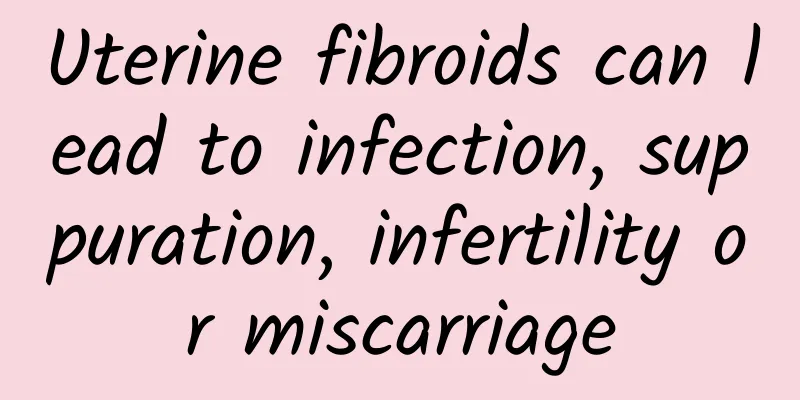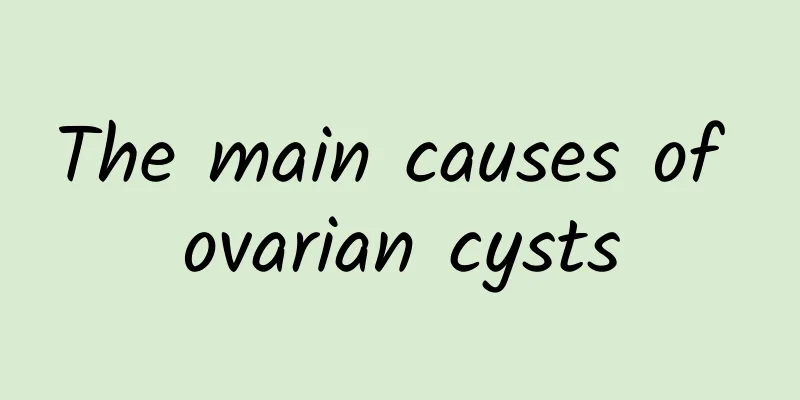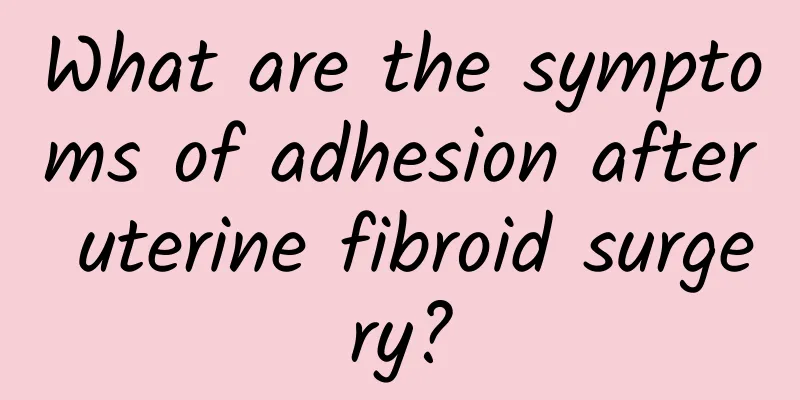Uterine fibroids can lead to infection, suppuration, infertility or miscarriage

|
In our lives, it is very common for women to suffer from uterine fibroids. The harm of uterine fibroids is very great, but as a patient, do you already understand the harms of uterine fibroids ? Let us take a look at the harms of uterine fibroids. 1. Infection and suppuration. The harm of uterine fibroids is mainly manifested as pelvic congestion and infection. The infection is mostly caused by the torsion of the tumor pedicle, while blood-borne infection is extremely rare. After infection, a few patients will form abscesses in the tumor tissue, while the rest will show suppuration. 2. Adhesion or inflammation. After the subserosal uterine fibroid pedicle is twisted, intestinal adhesion will occur, which will be infected by intestinal bacteria. The inflamed fibroid will adhere to the uterine appendages, causing suppurative inflammation. On the other hand, fibroids can also cause pathogenic bacteria to invade other uterine organs due to bleeding, causing gynecological inflammation such as adnexitis and pelvic inflammatory disease. 3. Free fibroids. Subserous uterine fibroids can twist at the pedicle, causing acute abdominal pain. In severe cases, if surgery is not performed immediately, the pedicle may be broken and a free fibroid may form. Of course, the twisted fibroids can also drive the entire uterus, causing axial torsion of the uterus (mostly near the internal opening of the cervical canal). 4. Secondary anemia. Excessive menstrual bleeding is also a manifestation of the harm of uterine fibroids. Over time, it will cause secondary anemia and even promote anemic heart disease. In severe cases, patients will experience adverse symptoms such as general fatigue, pale complexion, palpitations and shortness of breath. 5. Infertility or miscarriage. Uterine fibroids patients suffer from infertility because the fibroid tissue in the uterine corners compresses the entrance of the fallopian tube, causing the uterus to deform and hinder the implantation of the fertilized egg. In addition, statistics show that spontaneous abortion is the most common hazard of uterine fibroids. 6. Malignant lesions. Uterine fibroids are benign tumors, but a small number of women still cannot escape the risk of malignant changes (the malignant change rate is about 1%), which is particularly prominent in older women. Therefore, those with rapidly growing fibroids or postmenopausal fibroids should be vigilant. The six key points described above are the hazards of uterine fibroids. Based on the hazards of uterine fibroids introduced by the experts here today, you should take treatment actions as soon as possible. If you still have any questions about the hazards of uterine fibroids, you can directly consult our online experts. I wish you a speedy recovery. |
<<: A common symptom of uterine fibroids is changes in menstruation.
>>: Be cautious about misunderstandings in the treatment of dysmenorrhea
Recommend
How to prevent adnexitis during menstruation
Adnexitis refers to inflammation of the fallopian...
What happened to the palace?
Uterine prolapse may sound strange, but it is act...
What painkillers are good for dysmenorrhea
What painkillers are good for dysmenorrhea? It is...
Treatment of adnexitis
In fact, although adnexitis is only a gynecologic...
How to treat uterine fibroids? How to treat uterine fibroids?
Modern medical research has found that the estrog...
Do multiple uterine fibroids require surgery? How big does a uterine fibroid need to be to require surgical treatment?
Menstrual changes, abdominal lumps, increased leu...
We need to understand the symptoms of irregular menstruation in advance
The occurrence of irregular menstruation brings a...
What causes uterine adnexitis?
Due to the special location of the inflammation a...
What to do if endometrium is thick?
Normal endometrium of childbearing age is 8-12mm....
Knowing the cause of adnexitis can effectively prevent this disease
In recent years, due to the continuous progress a...
Chinese medicine secret recipe for treating uterine fibroids
What are the methods of treating uterine fibroids...
What is uterine fibroids? Is it easy to treat? How to treat uterine fibroids?
What is uterine fibroids? Is it easy to treat? Ho...
Learn how to prevent vulvar leukoplakia
Gynecological diseases are common diseases among ...
Precautions for patients with uterine fibroids during pregnancy
The effects of uterine fibroids on pregnancy may ...
5 reasons for irregular menstruation in women There are four dietary methods to regulate irregular menstruation
Irregular menstruation is one of the common menst...









